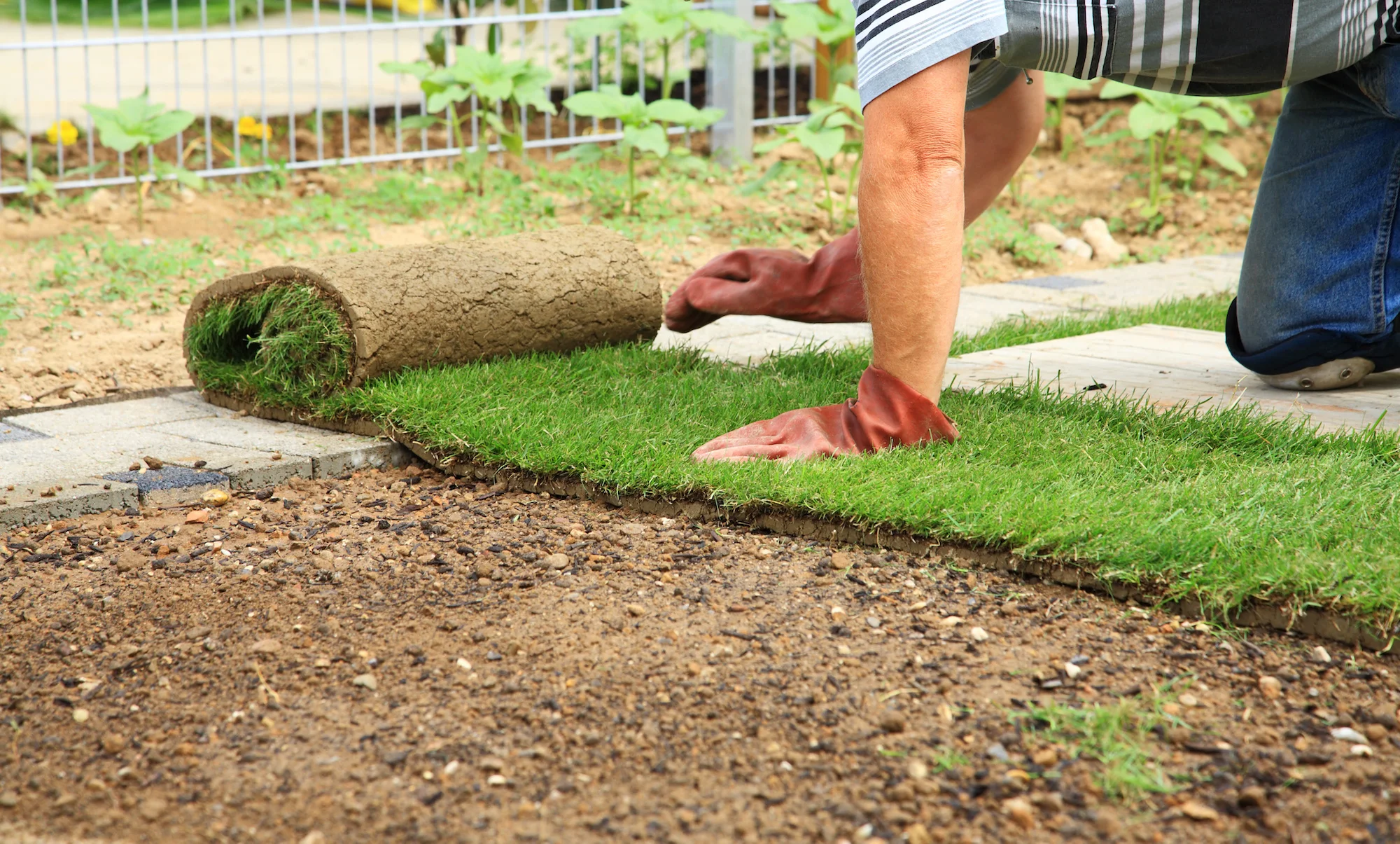Cultivated turfgrass allows you to enjoy a lawn of instant beauty and maturity without the usual time-consuming hassles of seeding.
When purchasing turfgrass sod, contact us so we can ensure you’re getting the finest quality turfgrass available to suit your needs.
The following are basic steps to a beautiful lawn…
Step 1: Measuring & Ordering
When ready to order turfgrass sod, Medina Turf Farms customers can request a quote online.
With a tape, measure the area of your planned lawn. Include these measurements on a sketch of the lawn area, with the length, width, and any unusual features. We’re happy to determine the amount of turfgrass sod you will need based on information from your sketch.
Schedule your order for delivery of turfgrass after preparatory work is complete and you are ready to install. Prompt installation on the day of delivery is crucial to a strong beginning for your lawn.
Step 2: Soil Preparation
For best results, rototill or spade the area to a depth of 10 to 15 cm (4 to 6 in.). Eliminate drainage problems by having soil slope away from foundations, etc.
Soil-test your lawn area with the assistance of a qualified service provider in your area. Then, rake in fertilizer, lime, peat, compost, etc. as needed to a depth of 7 to 10 cm (3 to 4 in.). Rake and smooth the soil, removing rocks, roots, and large clods of dirt or debris. Roll the area lightly with a lawn roller 1/3 full of water. This will firm the soil surface and reveal low areas that need more soil. Keep the grade 2 to 3 cm (1 in.) below sidewalks or driveways.
You may lightly water the area to settle soil and provide a moist base for turf.
Step 3: Installation
Install your lawn immediately upon delivery. Begin watering lawn within 30 minutes of installation. Turfgrass is a living plant that requires ground contact and moisture to survive!
In hot weather, protect unlaid turf by placing stacks in shade, covering with moist burlap sacking, and/or sprinkling.
Begin installing turf along the longest straight line, such as a driveway or sidewalk. Butt and push edges and ends against each other tightly, without stretching. Avoid gaps or overlaps. Stagger the joints in each row in a brick-like fashion, using a large, sharp knife to trim corners, etc. Avoid leaving small strips at outer edges, as they will not retain moisture. On slopes, place the turfgrass pieces across the slope. For sharply angled slopes, we have "sod staples" available to hold your turfgrass in place.
To avoid causing indentations or air pockets, avoid repeated walking or kneeling on the turf while it is being installed or just after watering. If you must walk across newly laid sod, we recommend laying a board down to walk on. This helps to distribute your weight evenly.
After installing the turf, roll the entire area with a half-full lawn roller to improve turf-to-soil contact and remove air pockets.
Interested in purchasing and installing turfgrass sod?




